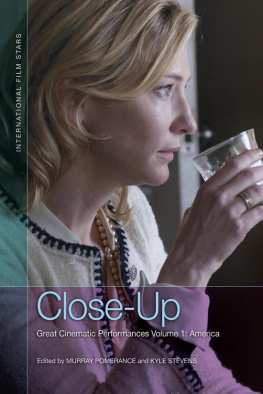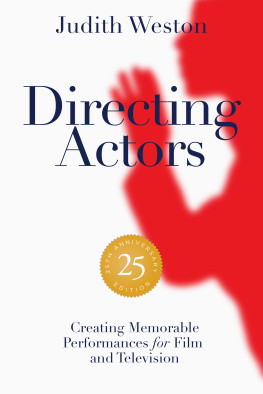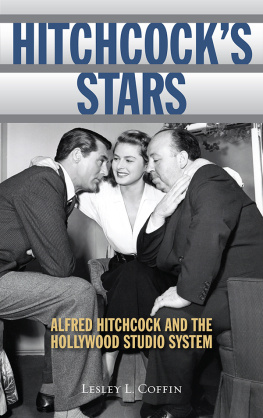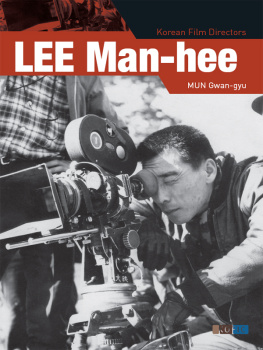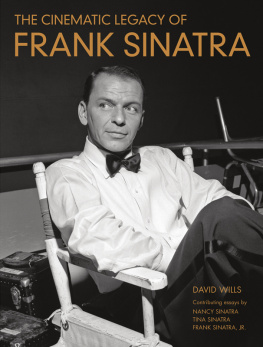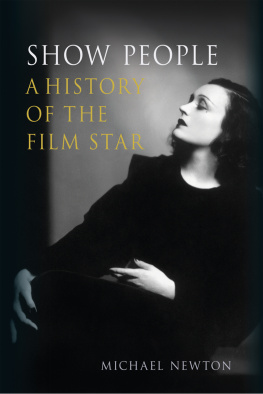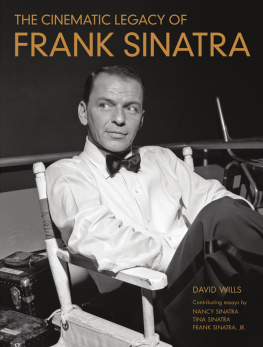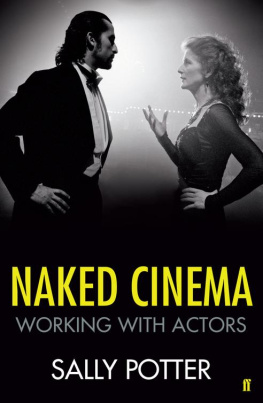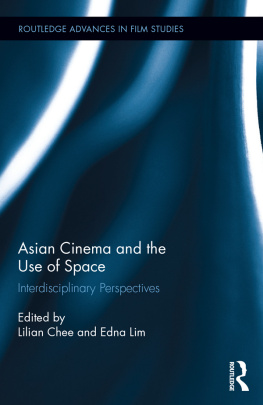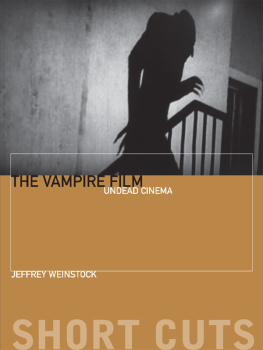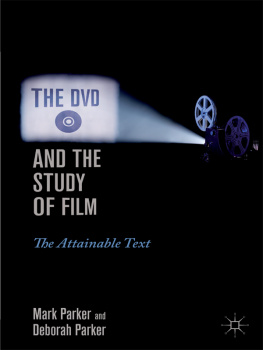
Close-Up
Volume 1: America
International Film Stars
Series Editor: Homer B. Pettey and R. Barton Palmer
This series is devoted to the artistic and commercial influence of performers who shaped major genres and movements in international film history. Books in the series will:
Reveal performative features that defined signature cinematic styles
Demonstrate how the global market relied upon performers generic contributions
Analyse specific film productions as case studies that transformed cinema acting
Construct models for redefining international star studies that emphasise materialist approaches
Provide accounts of stars influences in the international cinema marketplace
Titles available:
Close-Up: Great Cinematic Performances Volume 1: America
edited by Murray Pomerance and Kyle Stevens
Close-Up: Great Cinematic Performances Volume 2: International
edited by Murray Pomerance and Kyle Stevens
www.euppublishing.com/series/ifs
Close-Up
Great Cinematic Performances
Volume 1: America
Edited by Murray Pomerance
and Kyle Stevens
EDINBURGH
University Press
Edinburgh University Press is one of the leading university presses in the UK. We publish academic books and journals in our selected subject areas across the humanities and social sciences, combining cutting-edge scholarship with high editorial and production values to produce academic works of lasting importance. For more information visit our website: edinburghuniversitypress.com
editorial matter and organization Murray Pomerance and Kyle Stevens, 2018
the chapters their several authors, 2018
Edinburgh University Press Ltd
The TunHolyrood Road
12 (2f) Jacksons Entry
Edinburgh EH8 8PJ
Typeset in 12/14 Arno and Myriad by
IDSUK (Dataconnection) Ltd,
printed and bound in Great Britain by
CPI Group (UK) Ltd, Croydon CR0 4YY
A CIP record for this book is available from the British Library
ISBN 978 1 4744 1700 6 (hardback)
ISBN 978 1 4744 1701 3 (webready PDF)
ISBN 978 1 4744 1702 0 (epub)
The right of the contributors to be identified as authors of this work has been asserted in accordance with the Copyright, Designs and Patents Act 1988 and the Copyright and Related Rights Regulations 2003 (SI No. 2498).
Images (all digital frame enlargements)
Ethel Waters in The Member of the Wedding (Fred Zinnemann, Stanley Kramer Productions, 1952)
Irene Dunne in The Awful Truth (Leo McCarey, Columbia, 1937)
Cary Grant in His Girl Friday (Howard Hawks, Columbia, 1940)
Janet Gaynor in Sunrise: A Song of Two Humans (F. W. Murnau, Fox, 1927)
Katharine Hepburn in The Lion in Winter (Anthony Harvey, AVCO Embassy, 1968)
Bette Davis in Dangerous (Alfred E. Green, Warner Bros., 1935)
James Stewart in Vertigo (Alfred Hitchcock, Paramount, 1958)
Carole Lombard in To Be or Not to Be (Ernst Lubitsch, Romaine Film Corporation, 1942)
James Mason in Lolita (Stanley Kubrick, MGM, 1962)
Montgomery Clift in A Place in the Sun (George Stevens, Paramount, 1951)
Tony Curtis in Sweet Smell of Success (Alexander Mackendrick, Hecht-Hill-Lancaster, 1957)
Peter Sellers in The Pink Panther (Blake Edwards, Mirisch, 1963)
Richard Burton in The Spy Who Came In from the Cold (Martin Ritt, Salem, 1965)
Jerry Lewis in The King of Comedy (Martin Scorsese, Embassy/Twentieth Century Fox, 1982)
Sidney Poitier in In the Heat of the Night (Norman Jewison, Mirisch, 1967)
Gene Hackman in The Conversation (Francis Ford Coppola, American Zoetrope, 1974)
Gena Rowlands in Gloria (John Cassavetes, Columbia, 1980)
Jack Nicholson in The Passenger (Professione: Reporter) (Michelangelo Antonioni, MGM, 1975)
Dustin Hoffman in Rain Man (Barry Levinson, United Artists, 1988)
Elliott Gould in The Long Goodbye (Robert Altman, Lions Gate, 1973)
Al Pacino in Donnie Brasco (Mike Newell, Mandalay, 1997)
Whoopi Goldberg in The Color Purple (Steven Spielberg, Amblin, 1985)
Cate Blanchett in Blue Jasmine (Woody Allen, Gravier/Perdido, 2013)
Oscar Isaac in A Most Violent Year (J. C. Chandor, Washington Square, 2014)
Kristen Stewart in Clouds of Sils Maria (Olivier Assayas, CG Cinma, 2014)
Contents
Acknowledgments
We wish to express gratitude to our friends and collaborators at Edinburgh University PressEddie Clark, Gillian Leslie, Rebecca Mackenzie, Emma Rees, and Richard Strachanas well as to Barton Palmer and Homer Pettey for welcoming this volume into their series, International Film Stars; also to Sarah Burnett for copy-editing and Steve Flemming for cover design.
Further assistance along the way has come from Matt Bell, Baak Candar, Alex Clayton, Nick Davis, Mark Kermode, Chris Meade, David Orvis, Bob Rubin, Jonathan Soja, Rick Warner, and Evan Williams.
Our families have sheltered us in the storms of production, such as any endeavor involving the art of performance inevitably endures. We dedicate these volumes to James Pearson, Nellie Perret, and Ariel Pomerance.
To be natural is such a very difficult pose to keep up.
(Oscar Wilde)
An actor relaxes in front of the camera by concentrating.
(Michael Caine)
Close-up: great American
performances
Kyle Stevens and Murray Pomerance
The twentieth century may one day be known as the era of performance in American culture. The thought, All the worlds a stage,/And all the men and women merely players comes from Shakespeares Twelfth Night (1602). But, at the broadest level, thinking of the widespread nature of performance, and of the manifold ramification of performances in organized life, involves a movement away from the shared belief, if not assumption, that an all-powerful god authored and continually re-authors the world. We feel inspired now to consider the nature of action and agency, to wonder what is behind the visible act and what it implies. In crime fiction and popular culture, since the 1940s certainly, authors have figured what Ian Sansom, in a review of Dorothy B. Hughess In a Lonely Place (1947), called the illusion of the normal (15). In academic circles, starting in the 1950s, Erving Goffmans dramaturgical analysis expanded the field of sociology by elucidating the performative aspects of self-presentation in everyday life. Following him, and Elizabeth Burnss work on theatricality, Judith Butler helped propel massive social change by arguing for the extent to which sex and gender can be conceptualized as performative in ways that are inherently culturally conditioned. Goffmans and Butlers work, in turn helped give rise to the field of Performance Studies, the case for which was made largely by Richard Schechner. In philosophy, Ludwig Wittgenstein, J. L. Austin, and Stanley Cavell effected a change in thinking about language and truth by expanding the purview of thinking from what is said to how it is said, that is, to the theatricality of language use. In the realm of expressive culture, of course, cinema as a performance-driven art burst forth at least from the late 1910s to dominate the popular ethos. Now that screen fictions are a presence in our daily, if not hourly, lives, aesthetic performances shape our perceptions of others as never before: what types of people we detect, what gestures we attend to, what assumptions we make about them, and so forth. So it makes good sense to study screen performances.
Next page
